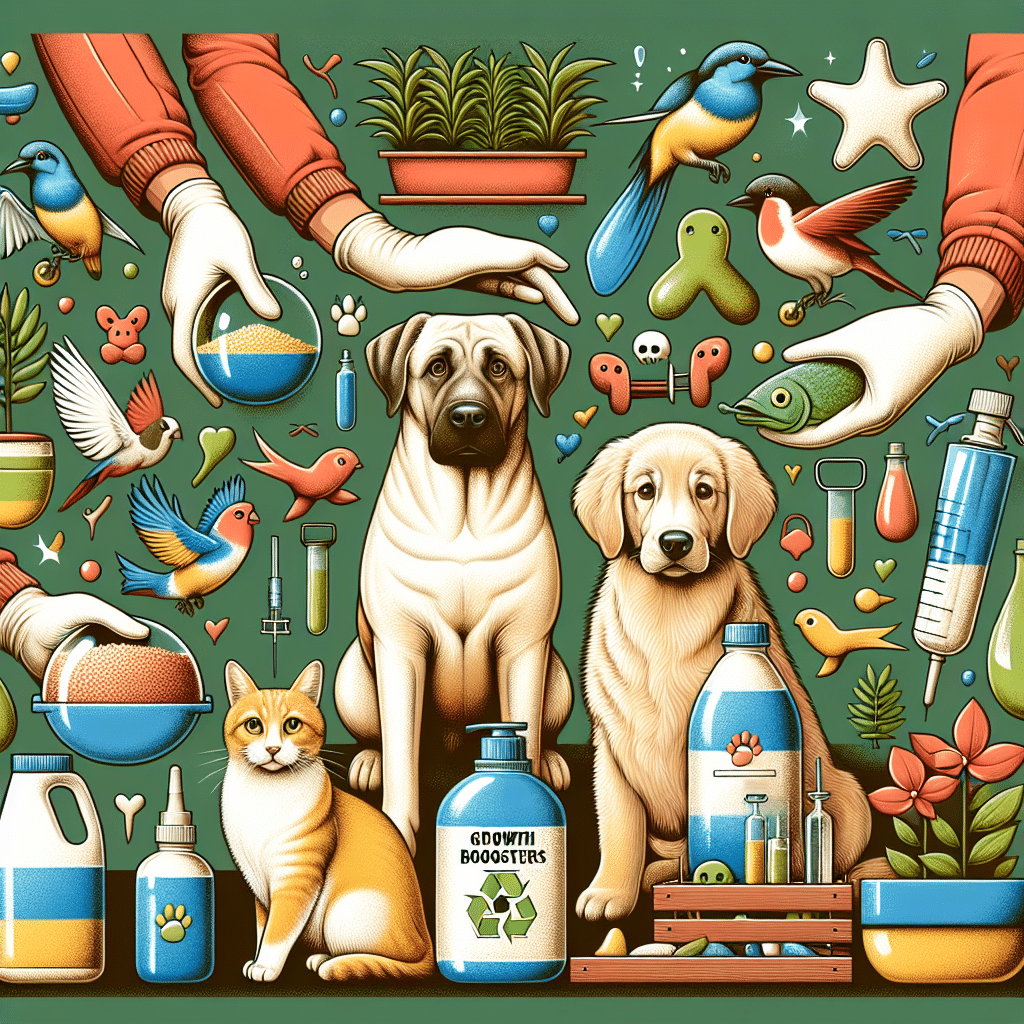Understanding Growth Boosters and Their Use
Growth boosters are products designed to enhance plant development by accelerating growth, increasing yield, and improving overall health. While effective, many of these products contain chemicals that can pose risks to pets if handled improperly. Knowing the safe usage of these boosters around your furry friends is crucial for ensuring their health and safety.
Types of Growth Boosters
There are several categories of growth boosters available in the market. The most common types include:
-
Organic Growth Boosters: These are derived from natural sources like fish emulsion, bone meal, and compost teas. Although generally safer for pets due to their natural origins, caution is still advised.
-
Chemical Growth Boosters: These include synthetic hormones and fertilizers that can significantly enhance growth rates. However, they often contain toxic substances that can harm pets if ingested or come into contact with their skin.
Key Safety Tips for Using Growth Boosters
1. Read Labels Carefully
It’s essential to examine the labels of growth boosters thoroughly before use. Many products will include safety information regarding toxicity to pets.
- Active Ingredients: Check for harmful chemicals and their potential effects on pets.
- Warnings: Look for specific warnings related to pets, especially for common household animals like dogs and cats.
2. Keep Products Secured
Store all growth boosters in secure cabinets or high shelves inaccessible to pets. Even organic products can pose risks if ingested in significant amounts.
- Childproof Locks: Consider using childproof locks if you have small pets that can easily reach items on low shelves.
3. Use in a Well-Ventilated Area
When applying growth boosters, make sure to do so in a well-ventilated area to avoid inhalation of dust or vapors.
- Outdoor Application: If possible, apply products outdoors, keeping pets at a safe distance until the area is safe for them to re-enter.
4. Apply Products Mindfully
Follow the manufacturer’s instructions for applying growth boosters. Over-application can lead to excess chemicals in the soil, potentially harming your pets.
- Right Timing: Apply these products when pets are least likely to be in the vicinity, such as early morning or late evening.
Identifying Pet-Reactive Ingredients
Certain ingredients in growth boosters are more likely to cause adverse reactions in pets. Understanding these can be crucial for pet owners:
- Nitrogen: Found in many synthetic fertilizers, excessive nitrogen can lead to gastrointestinal issues in pets.
- Chemical Herbicides: These can be extremely harmful if ingested, leading to severe toxicity.
- Synthetic Pesticides: Often used alongside growth boosters, these can cause neurological symptoms in pets if ingested or absorbed through the skin.
Recognizing Signs of Toxicity in Pets
If you suspect your pet has come into contact with a growth booster, it is vital to know the signs of potential toxicity:
- Vomiting and Diarrhea: Common initial signs of poisoning.
- Lethargy: An unusually low energy level may indicate distress.
- Tremoring or Seizures: Severe reactions often affect the nervous system.
- Excessive Drooling or Mouth Irritation: May indicate ingestion of harmful substances.
First Aid for Poisoning
If you notice signs of poisoning after your pet has possibly ingested or been exposed to a growth booster, take prompt action:
-
Contact Your Veterinarian: Immediate consultation is crucial. Provide them with the product’s label for accurate information.
-
Take Note of Symptoms: Document all symptoms you observe, as this information can be invaluable to your vet.
-
Do Not Induce Vomiting: Unless directed by your veterinarian, do not attempt to induce vomiting in your pet.
Alternative Pet-Safe Growth Boosters
For pet owners seeking gardening solutions that prioritize pet safety, consider the following alternatives:
- Compost: Naturally enriches soil without harmful chemicals and is safe for all pets.
- Seaweed Extracts: A gentle, organic option that promotes growth and is generally safe for pets.
- Bokashi: A fermentation process that creates nutrient-dense compost while being pet-safe.
General Best Practices for Garden Safety
1. Create a Dedicated Gardening Space
If possible, cultivate an area that’s off-limits to pets. Establish fences or barriers to prevent pets from accessing these zones.
2. Regular Monitoring
Keep an eye on your pets while outdoors. Dogs, especially, may be inclined to dig or taste soil and plant matter.
3. Consult Resources
Use veterinarian-approved websites and resources specific to pet safety in gardening. These platforms often provide insights on product safety and pet-friendly gardening practices.
Educating Family Members
Ensure that all family members are aware of the potential risks associated with growth boosters. This shared knowledge helps maintain a safe environment for pets and builds responsibility among all household members.
- Discuss Responsibilities: Assign specific tasks related to pet safety during gardening activities.
- Workshops and Resources: Attend local workshops or resources on pet-safe gardening to further understand the products being used.
Final Thoughts
Being proactive in using growth boosters safely around pets can significantly reduce the risk of exposure to harmful substances. By educating yourself and your family, employing safety measures, and considering pet-safe alternatives, you can cultivate a thriving garden while ensuring the well-being of your furry friends. Remember, a little caution goes a long way in protecting your beloved pets while enjoying the benefits of gardening.
